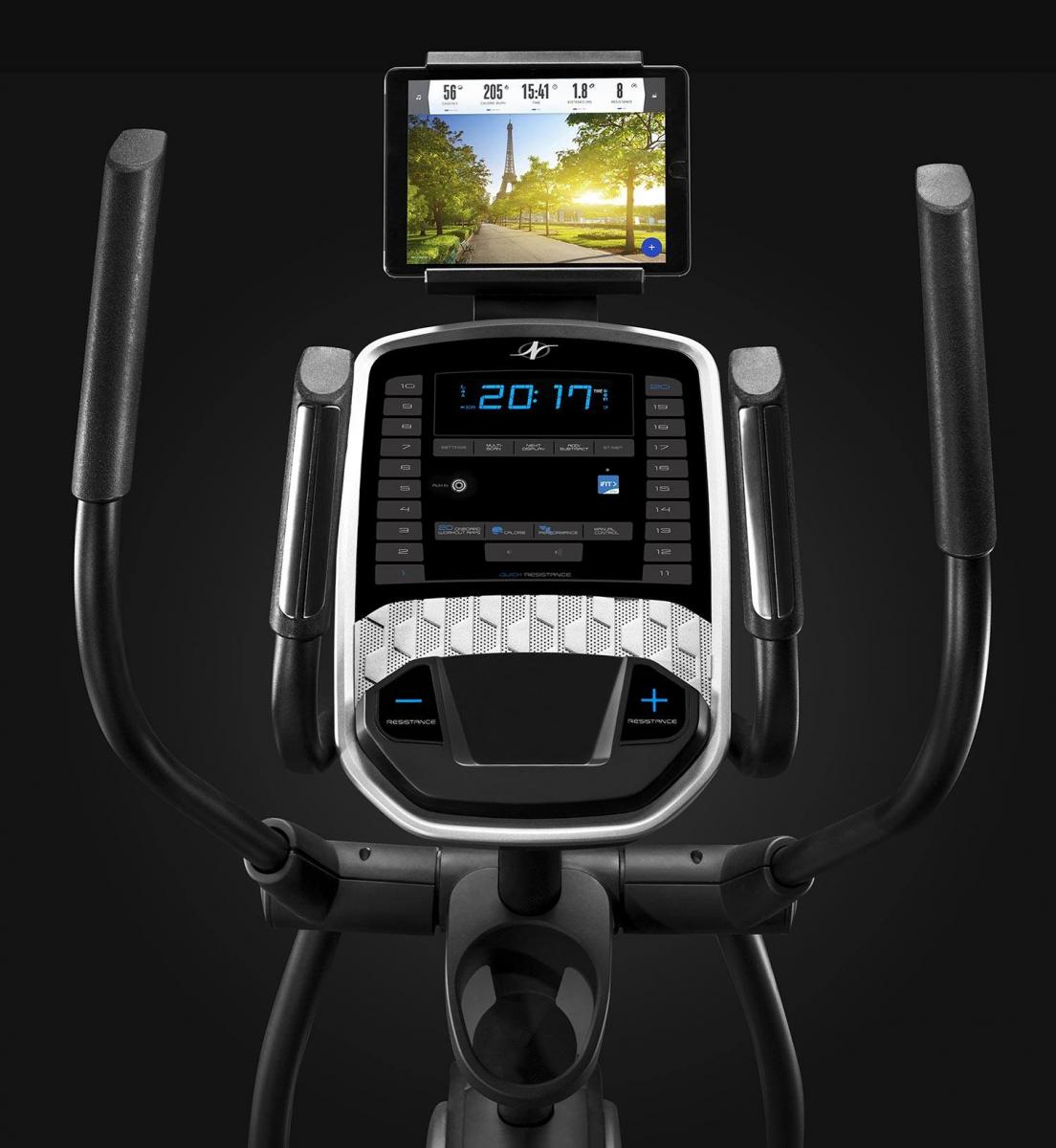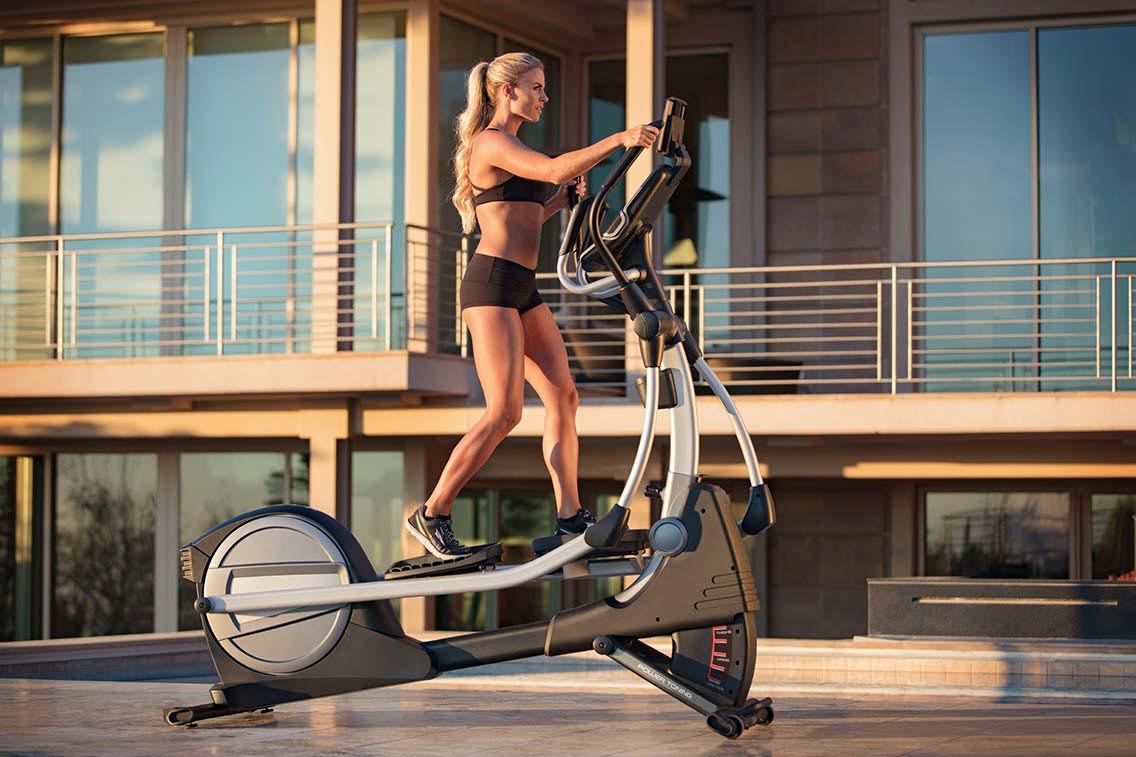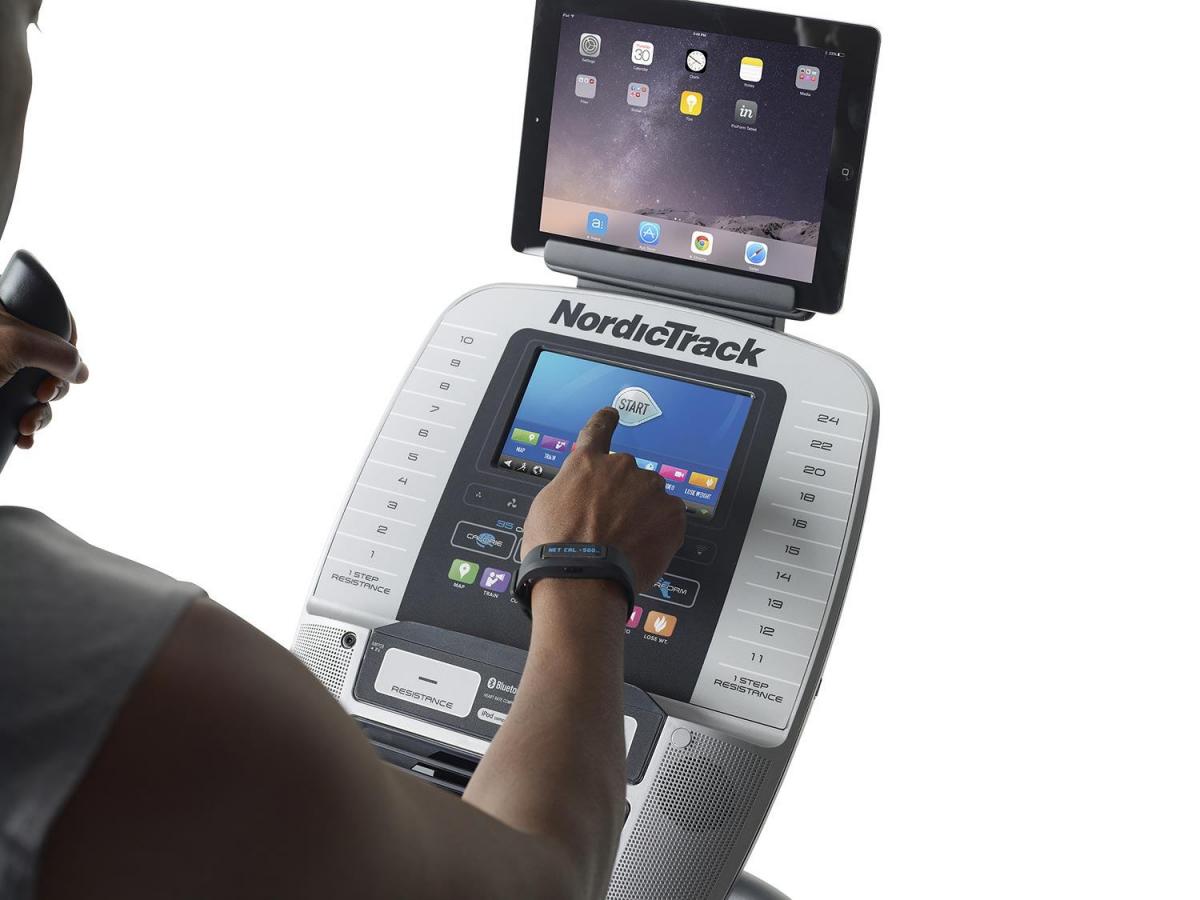Some ellipticals offer up to 26 resistance levels. What do these resistance levels equate to? How can they be adjusted for an effective workout that matches your goals? Learn more below.
Resistance levels

When you work out on an elliptical, you transmit energy to the pedals by pushing with your legs. If the pedals offered no resistance, you could pedal as fast as you wanted with very little effort! That’s why an elliptical includes a system designed to resist your pedaling. This internal braking system can be set to different levels of intensity, otherwise known as the resistance level. At a constant running speed, the higher the level of resistance, the more difficult it will be to pedal, and the more energy you will expend. These resistance levels are arbitrary: there is no standard measure, and they are generally not comparable from one device to another.
On the first fitness machines, the most common form of resistance was simple friction. But this was accompanied by a terribly unpleasant noise, and it also made the devices break down quickly. Today, most fitness devices use magnetic resistors. This is the case for all devices designed by NordicTrack.
Choosing the right resistance level

A lot of factors go into choosing a resistance level for your elliptical. Contrary to what you might think, your weight is not as important as it seems. It’s not simply your body’s weight that passively causes the pedals to move, but rather your legs that actively provide the effort and operate the pedals regardless of how much you weigh.
This means that the primary factor for determining the proper resistance level is your physical condition.
A second important thing to consider is the type of exercise that you want to do. With an elliptical, you can work hard every day with a great machine and this can be beneficial with the resistance too as it can then be adapted accordingly. For example, if you want to exercise your arms, your legs should bring minimal effort to the exercise, and you’ll need to reduce the machine’s resistance to make your arms do most of the work. Conversely, if you use both your legs and arms, a level of resistance that is too low will make the exercise too easy.
Finally, the last factor influencing the choice of resistance is the intensity of your exercise. To work on your cardio, the intensity should be relatively small, but with prolonged effort. On the contrary, a muscle building workout should be done over shorter but more intense sessions.
In conclusion, there is no absolute rule for determining your optimal resistance level: it must be adjusted according to your individual needs. You’ll accomplish this at first through trial and error, but eventually you’ll get the hang of it and just set resistance levels by habit.
Avoid the trial and error: let the machine guide you
NordicTrack ellipticals are all equipped with a console through which you can adjust your level of difficulty. You can easily vary your level at any time during your workout. And while you certainly can adjust your workout manually in this way, there are other ways that make it even easier for you to get the right level.
One is through training programmes: you can create one yourself, or you can use one of the built-in ones already stored in your elliptical’s console. To run one of these professionally designed programmes, select it, choose an intensity (that is, a basic “difficulty,” depending on your athletic level) and start moving! The level of resistance and the incline, depending on the model, will adjust in real time to enable you to work your cardio as well as build muscular strength. All you have to do is choose your specific level of intensity at the outset, and then you’re off to a complete and balanced workout.

If you get tired of the console’s programmes or want to upgrade to the next level, switch to iFit technology. All NordicTrack ellipticals are Bluetooth-compatible with iFit available through a tablet app. Some models even have iFit directly integrated in the console: you can thus access a personalised training programme, designed according to your abilities and objectives. It’s as if you had a coach at home, to assist you in your training, to make sure you’re eating well, etc. So, what’s keeping you from starting today? Imagine: in a few months, you’ll have the body – and the health – you’ve always dreamed of.
Check out our Fitness Equipment & Coaching page for more advice.
Follow our Instagram for new and exciting updates.
Get Our Tips On How To Best Start Training On Your New Exercise Bike
You just bought an exercise bike. Great decision! You’ll be able to train regularly now, from the comfort of your own home. Sometimes, though, it can still be difficult to keep on the schedule…
Get Our Tips On How To Best Start Training On Your New Fusion CST
The Fusion CST is an innovative, all-in-one home fitness device that will enable you to boost your cardio and develop all the muscles in your body. So, step on and get moving! Wondering where to start…
Exercise Bike Or Elliptical? Let Us Help You Choose The Right One For You
Exercise bikes and ellipticals both work your cardio as well as your lower body. They may seem very similar at first glance, but there are real differences between these two home fitness devices…
How To Get The Same Feeling From An Exercise Bike As When You’re Biking Out On The Road
You want to train regularly at home, so you’ve decided to buy a home fitness device. You love biking, though, and you’re not sure if an indoor exercise bike will capture that same feeling…
Getting Started With Your Rower
Today’s rowing machines have mostly replaced their two “oars” with a central handle. But whether using two oars or one handle, the mode of use has changed very little. That said, using…
